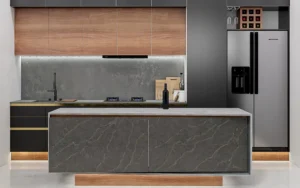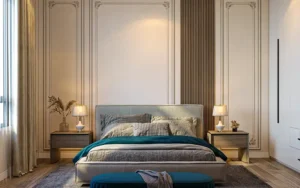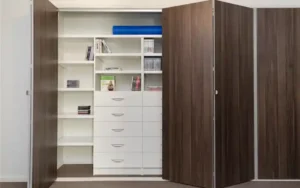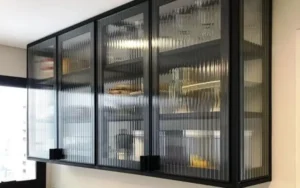HDHMR Board: The Future of Moisture-Resistant Engineered Wood Technology
In This Post. All about HDHMR Board.
- HDHMR Board?
- Common Names.
- Manufacturing Process.
- Primary Applications.
- Advantages.
- Limitations.
- Recommendations
HDHMR Board
High Density High Moisture Resistance (HDHMR) boards represent a revolutionary advancement in engineered wood technology, marking a significant departure from traditional wood-based panels. This innovative material embodies the culmination of decades of research in wood science and manufacturing technology, offering unprecedented performance characteristics that address longstanding challenges in the construction and interior design industries.

In an era where sustainability meets technological innovation, HDHMR boards emerge as a perfect synthesis of environmental responsibility and engineering excellence. Their development responds to growing demands for materials that can withstand challenging environmental conditions while maintaining structural integrity and aesthetic appeal.
This evolution in engineered wood technology not only enhances performance but also aligns with modern sustainability imperatives.
HDHMR Board Common Trade Names and Grades
The market presents HDHMR boards under various designations, each highlighting specific aspects of their characteristics:
- HDHMR Board – Standard technical designation
- High Density High Moisture Resistance Board – Complete descriptive name
- Advanced Engineered Wood Panel – Technical market classification
- Moisture-Resistant Fiber Board – Performance-based terminology
- Sustainable Composite Board – Environmental designation
- Premium Grade Fiber Board – Quality classification
- High-Performance Wood Composite – Technical marketing term
- Eco-Engineered Panel – Sustainability-focused designation
- Advanced MDF – Industry reference
- Water-Shield Board – Commercial designation
The Science of HDHMR Board Manufacturing
The production of HDHMR boards represents a masterful integration of advanced materials science and precision engineering. The process begins with sophisticated fiber selection technology that evaluates and sorts wood fibers based on their morphological characteristics. This selective approach ensures optimal fiber distribution and interaction in the final product.
The manufacturing process incorporates several innovative technologies:
Fiber Processing Technology: The initial stage employs advanced defibration systems that break down raw materials into uniform fibers while preserving their structural integrity. This process utilizes steam treatment at precisely controlled temperatures (160-180°C) and pressures (8-10 bar) to optimize fiber characteristics.
Homogeneous Compression Systems: State-of-the-art pressing technology applies uniform pressure across the entire board surface while maintaining precise thickness control. The compression process typically operates at pressures between 30-40 kg/cm², significantly higher than traditional wood panel manufacturing.
Chemical Treatment Integration: Moisture-resistant compounds are incorporated through a sophisticated binding system that creates molecular-level protection. These treatments typically include modified melamine-urea-formaldehyde resins and specialized hydrophobic agents that provide comprehensive moisture resistance.
Quality Control Systems: Advanced testing protocols employ non-destructive evaluation techniques, including ultrasonic testing and density profile analysis, to ensure consistent product quality. These systems monitor critical parameters in real-time during production.
Greenply Industries, Century Plyboards, Kitply Industries and Sarda Plywood Industries are the major HDHMR board manufactures in india
HDHMR Board key Applications
HDHMR boards find applications across an impressive range of environments, each leveraging their unique performance characteristics:
Healthcare Facilities:
- Operating room cabinet systems
- Laboratory storage units
- Medical equipment enclosures
- Clean room partitioning
Commercial Spaces:
- Restaurant furniture
- Hotel bathroom vanities
- Retail display systems
- Office workstations
Residential Applications:
- Kitchen cabinetry
- Bathroom furniture
- Utility room storage
- Basement finishing systems
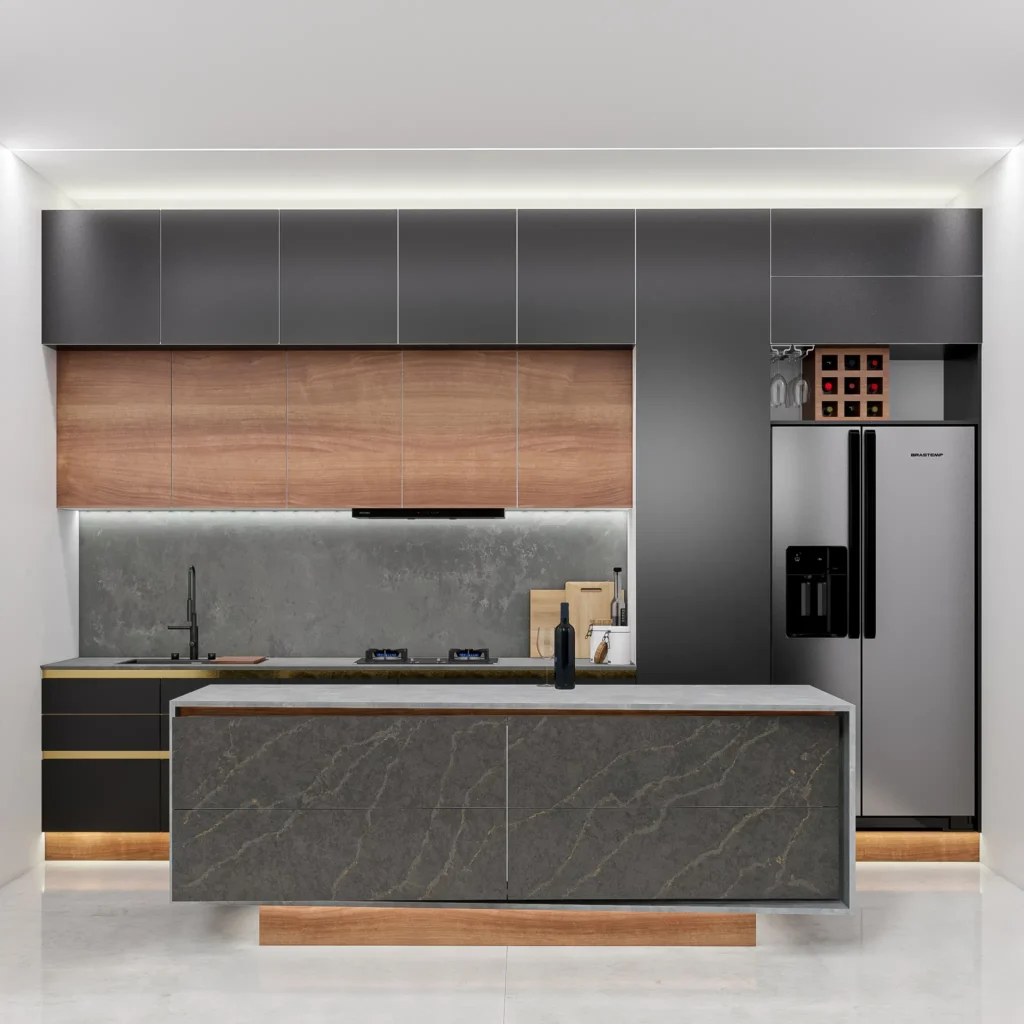
Design Your Dream Interior: Explore Our Modular Interior Design Services
Launch Your Modular Interior Journey with Align Designs: Find the Best Plywood and Hardware Fittings in Our Curated List.
✔️Free 3D Designs
✔️Color selection
✔️45 Days Deliver
✔️15 years Guarantee
HDHMR Board Advantages
The practical benefits of HDHMR extend far beyond its basic specifications. Its superior density provides excellent screw-holding capacity, making it ideal for furniture construction where hardware attachment is crucial. The material’s uniform structure ensures clean cutting and machining, resulting in precise joinery and smooth edges.
HDHMR boards exhibit exceptional performance metrics that set them apart from conventional engineered wood products:
Moisture Resistance:
- Water absorption rate less than 2% after 24-hour immersion
- Thickness swelling below 1% in standard testing conditions
- Maintains structural integrity in up to 90% relative humidity
From a sustainability perspective, HDHMR offers significant advantages. Its use of recycled materials and agricultural waste reduces the demand for virgin timber, while its durability ensures a longer service life, reducing the need for replacement and minimizing environmental impact.
Understanding Limitations of HDHMR Board
While HDHMR boards offer superior performance, understanding their limitations ensures appropriate application:
Cost Considerations:
- Initial investment 40-50% higher than standard MDF
- Installation costs comparable to traditional materials
- Long-term cost benefits through reduced maintenance
Performance Boundaries:
- Not suitable for continuous outdoor exposure
- Requires proper edge sealing for optimal performance
- Weight considerations in vertical applications
Interior Design Applications and Recommendations
For optimal utilization in interior design, consider these application-specific guidelines:
Kitchen Environments
- Cabinet carcass construction
- Drawer box fabrication
- Pantry systems
- Island base units
- Overhead cabinet construction
Bathroom Applications
- Vanity units
- Medicine cabinets
- Shower enclosures
- Storage solutions
- Ceiling treatments
Commercial Spaces
- Reception desks
- Conference room furniture
- Display units
- Partition systems
- Built-in storage
Expert Implementation Guidelines
proper material selection is crucial – matching the board’s thickness and grade to the specific application requirements. While HDHMR offers excellent moisture resistance, additional protection through appropriate finishes and sealants can further extend its lifespan.
Design considerations should account for the material’s weight and handling characteristics. Proper support structures and appropriate hardware selection are essential for long-term success. Installation techniques should follow manufacturer guidelines, particularly regarding edge treatment and ventilation requirements.
For designers and architects, staying informed about HDHMR’s capabilities and limitations is crucial for successful implementation. Understanding proper application techniques and maintenance requirements enables better decision-making in material selection and application.
As we continue to push the boundaries of interior design, HDHMR boards remain a reliable solution for moisture-resistant applications, offering the perfect balance of durability, functionality, and environmental responsibility.

